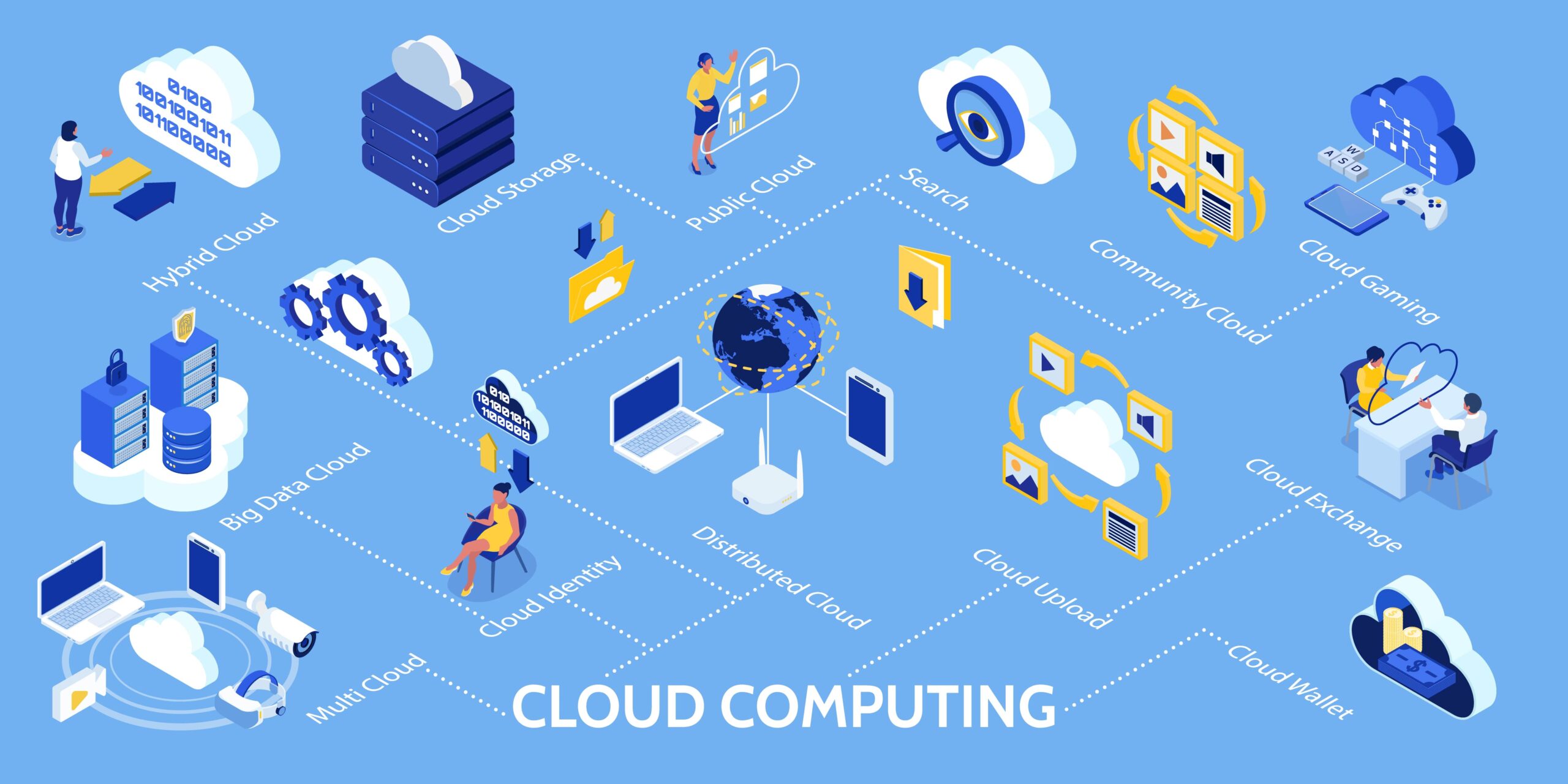In the landscape of modern business technology, hybrid cloud computing has emerged as a pivotal solution for enterprises seeking flexibility, scalability, and efficiency in their IT infrastructure. This article delves deep into the concept of hybrid cloud computing, explores its benefits and challenges, and provides insights into how enterprises can effectively leverage this technology to optimize their operations.
Introduction to Hybrid Cloud Computing
Hybrid cloud computing represents a strategic approach that combines the benefits of both public and private cloud environments. It allows enterprises to leverage the scalability and cost-effectiveness of public clouds while maintaining greater control, security, and customization offered by private clouds. This flexibility enables organizations to tailor their IT infrastructure to meet specific business needs and regulatory requirements.
Understanding the Components of Hybrid Cloud
1. Public Cloud Services
- Public cloud services are offered by third-party providers over the internet. They provide on-demand access to computing resources such as virtual machines, storage, and applications.
- Benefits: Scalability, cost-efficiency, global reach, and rapid deployment of services.
- Examples: Amazon Web Services (AWS), Microsoft Azure, Google Cloud Platform (GCP).
2. Private Cloud Infrastructure
- Private clouds are dedicated environments operated exclusively for a single organization. They can be hosted on-premises or managed by a third-party provider.
- Benefits: Enhanced security, control over resources, compliance with specific regulations, and customization.
- Examples: VMware vSphere, OpenStack, Microsoft Azure Stack.
3. Hybrid Cloud Integration
- Integration involves connecting public and private cloud environments seamlessly, allowing data and applications to be shared between them.
- Benefits: Flexibility to move workloads between environments based on changing needs, optimize costs, and improve performance.
- Challenges: Ensuring compatibility, managing complexity, maintaining security across hybrid infrastructure.
Benefits of Hybrid Cloud Computing for Enterprises
1. Scalability and Flexibility
- Enterprises can scale their IT resources dynamically, leveraging public cloud scalability during peak demand while maintaining essential applications in a private cloud environment.
2. Cost Optimization
- Hybrid cloud allows organizations to balance cost-effectiveness with performance requirements by allocating workloads to the most appropriate cloud environment.
3. Improved Reliability and Disaster Recovery
- By distributing workloads across multiple environments, enterprises enhance resilience and ensure continuity in case of failures or disasters.
4. Enhanced Security and Compliance
- Private clouds offer robust security controls and compliance measures, while hybrid models enable sensitive data to remain on-premises, ensuring regulatory compliance.
5. Innovation and Competitive Edge
- Rapid access to advanced cloud services fosters innovation, enabling enterprises to deploy new applications and services more quickly than traditional IT environments.
Challenges and Considerations
1. Complexity of Integration
- Integrating disparate cloud environments requires careful planning, expertise, and sometimes specialized tools to ensure seamless operation and data consistency.
2. Data Management and Governance
- Maintaining data integrity, security, and compliance across hybrid environments requires robust governance frameworks and policies.
3. Cost Management
- Optimizing costs across hybrid environments involves monitoring usage patterns, workload placement, and renegotiating service agreements with cloud providers.
4. Skill Requirements
- IT teams need skills in both public and private cloud technologies to manage and optimize hybrid environments effectively.
Implementing Hybrid Cloud Solutions
1. Assessment and Planning
- Conduct a comprehensive assessment of existing IT infrastructure, workloads, and business requirements to determine the suitability of hybrid cloud adoption.
2. Workload Placement Strategy
- Define criteria for workload placement based on performance requirements, security considerations, and regulatory compliance.
3. Integration and Migration
- Implement integration strategies to ensure seamless data flow between public and private clouds while minimizing disruption to business operations during migration.
4. Monitoring and Optimization
- Establish monitoring tools and processes to track performance, security, and cost metrics across hybrid environments. Continuously optimize resource allocation based on usage patterns and business needs.
Case Studies and Real-World Examples
1. Netflix
- Netflix utilizes a hybrid cloud strategy to manage vast amounts of streaming data while maintaining critical components of its platform on private infrastructure for security and performance reasons.
2. General Electric (GE)
- GE leverages hybrid cloud solutions to streamline operations across its global network, balancing cost efficiency with stringent regulatory requirements in various sectors such as healthcare and aviation.
Future Trends and Innovations in Hybrid Cloud Computing
1. Edge Computing Integration
- The integration of edge computing with hybrid cloud environments will enable enterprises to process data closer to the source, reducing latency and enhancing real-time analytics capabilities.
2. AI and Machine Learning
- AI-driven automation and machine learning algorithms will play a crucial role in optimizing workload placement, resource allocation, and security management within hybrid cloud architectures.
3. Serverless Computing
- Serverless computing models, such as AWS Lambda and Azure Functions, will continue to evolve, offering enterprises more efficient ways to deploy and manage applications across hybrid environments.
Conclusion
Hybrid cloud computing represents a transformative approach for enterprises looking to balance flexibility, scalability, and control in their IT strategies. By strategically integrating public and private cloud environments, organizations can unlock new opportunities for innovation, cost optimization, and competitive advantage. However, navigating the complexities of hybrid cloud adoption requires careful planning, robust governance, and ongoing optimization to realize its full potential in driving business success.
As technology evolves and new challenges emerge, enterprises must continuously adapt their hybrid cloud strategies to align with evolving business needs and technological advancements. Embracing hybrid cloud computing not only prepares organizations for the future but also empowers them to thrive in a rapidly changing digital landscape.
By harnessing the power of hybrid cloud computing, enterprises can accelerate their journey towards digital transformation, enabling agility, scalability, and innovation across their operations.



